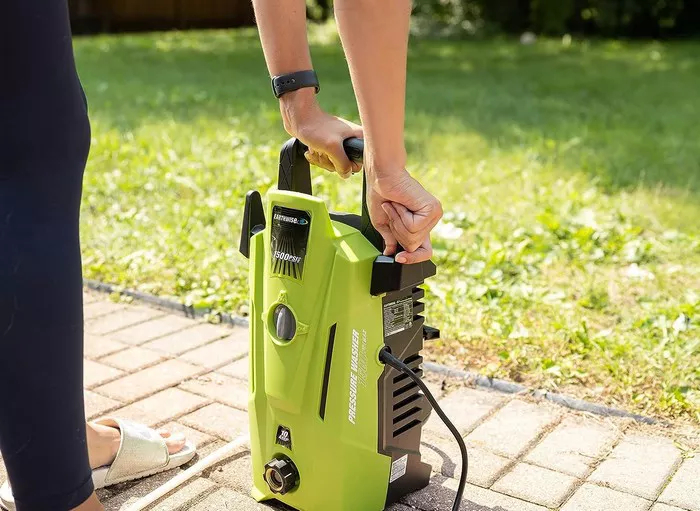Pressure washers are invaluable tools for cleaning a variety of surfaces efficiently and effectively. However, encountering issues with your pressure washer, particularly when it fails to spray, can be frustrating. In this guide, we’ll explore the common causes behind this problem, provide step-by-step troubleshooting steps, offer maintenance tips to prevent future issues, suggest repair solutions, recommend helpful products, and provide visual aids to assist you in resolving the issue.
Common Causes
When your pressure washer fails to spray, several common culprits may be at play:
1. Clogged Nozzles: Over time, debris such as dirt, grime, or minerals from hard water can accumulate in the nozzle, obstructing the flow of water.
2. Faulty Pump: The pump is the heart of your pressure washer, responsible for pressurizing the water. If the pump is malfunctioning or damaged, it will hinder the spraying mechanism.
3. Inadequate Water Supply: Insufficient water flow or pressure from the water source can prevent the pressure washer from operating correctly.
Troubleshooting Steps
To diagnose the issue and get your pressure washer spraying again, follow these step-by-step troubleshooting steps:
1. Check Water Supply: Ensure that your pressure washer is receiving an adequate water supply. Check the hose for kinks or obstructions and ensure the water source valve is fully open.
2. Inspect Nozzle for Clogs: Remove the nozzle from the spray gun and inspect it for any signs of clogging. Use a small pin or needle to clear any debris obstructing the nozzle’s opening.
3. Examine Pump: Check the pump for any visible signs of damage or leakage. Test the pump by disconnecting the hose and trigger gun, then running the pressure washer. If the pump is not functioning correctly, it may need to be repaired or replaced.
4. Check High-Pressure Hose: Inspect the high-pressure hose for leaks, kinks, or damage. Replace the hose if necessary, as leaks or damage can affect water flow and pressure.
5. Inspect Inlet Filter: Check the inlet filter for any debris or blockages. Clean or replace the filter as needed to ensure proper water flow to the pressure washer.
Maintenance Tips
Regular maintenance is key to preventing common issues with pressure washers. Here are some maintenance tips to keep your pressure washer in optimal condition:
1. Clean Nozzles Regularly: Routinely inspect and clean the nozzles to prevent clogs. Use a nozzle cleaning tool or a small pin to remove any debris obstructing the nozzle.
2. Flush System After Use: After each use, flush the pressure washer system with clean water to remove any remaining detergent or debris and prevent buildup.
3. Inspect and Replace O-Rings: Check the O-rings on hose connections for wear or damage. Replace any worn or damaged O-rings to prevent leaks and ensure a tight seal.
4. Store Properly: Store your pressure washer in a clean, dry area away from extreme temperatures and humidity. Proper storage can extend the lifespan of your pressure washer and prevent damage.
Repair Solutions
If troubleshooting steps fail to resolve the issue, or if you’re uncomfortable performing repairs yourself, consider seeking professional help. A certified technician can diagnose the problem accurately and recommend the appropriate repair solutions. Depending on the severity of the issue, repairs may include replacing faulty components such as the pump or nozzle, or repairing leaks or damage to the pressure washer system.
Product Recommendations
For DIY enthusiasts looking to fix or maintain their pressure washers, several products and tools can be helpful:
1. Nozzle Cleaning Kit: A nozzle cleaning kit typically includes various-sized needles or pins designed to clear nozzle obstructions effectively.
2. High-Pressure Hose Repair Kit: A hose repair kit contains fittings and clamps to fix leaks or damage to the high-pressure hose quickly.
3. O-Ring Assortment: An O-ring assortment provides a selection of O-rings in different sizes, ensuring you have the right replacement for worn or damaged O-rings.
Conclusion
In conclusion, understanding the common causes behind a pressure washer not spraying, following systematic troubleshooting steps, implementing regular maintenance practices, seeking professional help if needed, and utilizing appropriate products and visual aids are essential for ensuring the optimal performance and longevity of your pressure washer. By incorporating these strategies, you can keep your pressure washer running smoothly and tackle cleaning tasks with ease.

